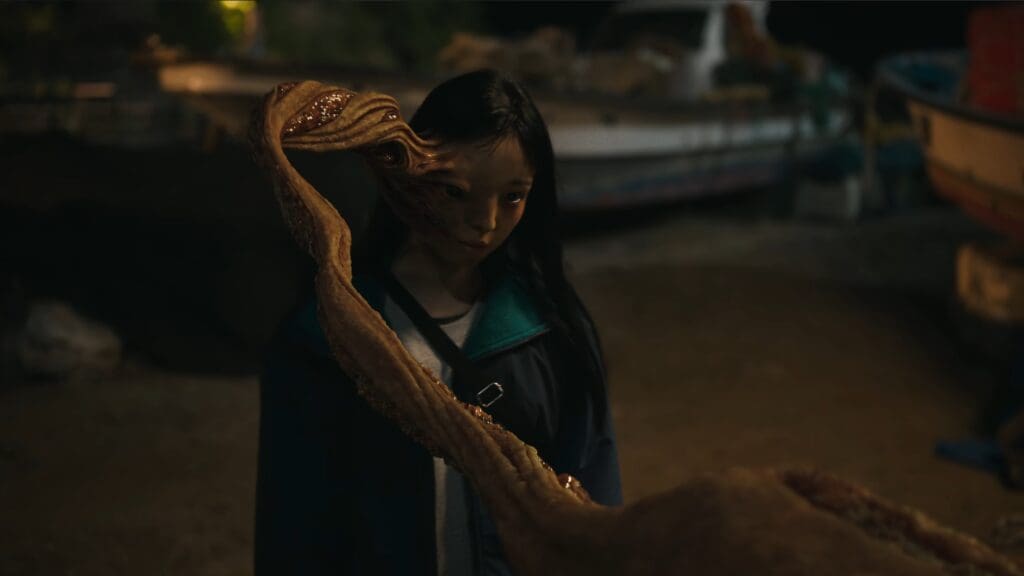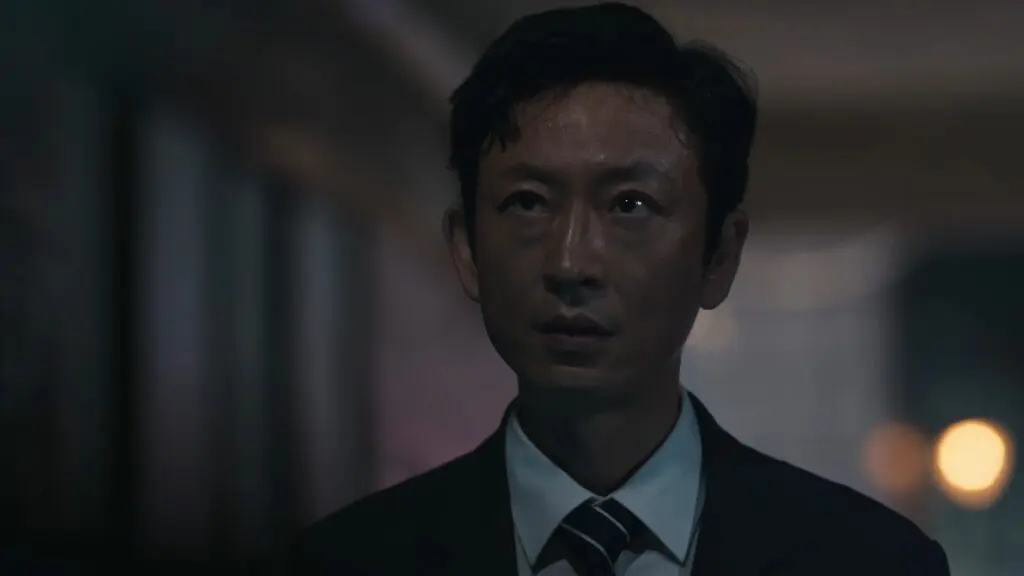Summary
The action and visuals do a lot of heavy lifting for Parasyte: The Grey, but the premise and themes are underexplored.
It’s easy to be fooled by a show like Parasyte: The Grey. It uses the ample resources of Netflix to bring a familiar concept – cribbed from the iconic manga by Hitoshi Iwaake – to terrifying life. Five minutes in, and you’ve already seen someone’s head split open into a tentacled monstrosity, but you’ll see it so many more times through Season 1’s six episodes that the initial shock will quickly wear off, and the gimmick will similarly wear thin.
Outside of that, Parasyte doesn’t have a great deal to say.
The hype is understandable, since the show comes from Yeon Sang-ho of Train to Busan fame, and uses the premise of the Japanese source material as a backdrop for a new story set in South Korea.
Netflix has marketed it rather explicitly as a big deal, which in terms of raw viewing figures it likely will be. But it’s still easy to feel like these direct-to-binge K-Dramas are missing a trick, sacrificing the long-form, character-based approach of the weekly shows imported from Korean channels in favor of a more bombastic, almost Westernized style.
The premise is simple enough – alien parasites infect human hosts, hiding and spreading in secret. Infected humans develop supernatural abilities, and the parasite stays alive by feeding on its host, which seems like a fair trade. But this quid-pro-quo relationship isn’t mined to especially interesting effect here, and the efforts of the parasite to organize and assimilate through human organizations and institutions are similarly thin in their depiction.
One of the fundamentals of the original story is preserved here – an infected protagonist, in this case, supermarket cashier Jung Su-in, who has a history of parental abuse. We’re introduced to her being stabbed by a crazy man over a meat sticker, and the parasite takes over to save her life – or more accurately to save its own.
Su-in wakes up to discover she’s no longer the person she once was. Her wounds are healed. There’s a ringing in her ears. And the trauma she has experienced throughout her life is beginning to creep back to the surface, intermingling with reality. Throughout the story Su-in slips in and out of the ambit of other characters like Detective Cheol-min, who rescued her when she reported her father’s abuses as a child, and Seol Kang-woo, a local hood. The tone is dour and the light is absent, both literally and figuratively.
Su-in gradually forms a symbiotic Jekyll and Hyde relationship with the parasite, which isn’t a new concept (hello, Venom.) The more interesting thematic angle is how the parasites try and expand through human society using social structures, but that’s not especially well-explored either.

Parasyte: The Grey (via Netflix)
The villain in Parasyte: The Grey poses as a church pastor, and his fellow aliens masquerade as a congregation. Since I only reviewed The Believers recently, I feel confident in saying that the underlying motivation of organized religion was better explored there.
Not that I’m opposed to more criticism of this subject. And it’s an interesting component here, especially in how the congregants ultimately succumb to very human, cult-like manipulation tactics. Perhaps we’re all the same after all!
The issue is that the metaphorical underpinnings aren’t the real focus here. In just six episodes, each blessedly running under an hour, they don’t have much room to be. Netflix spent a lot of money on making Parasyte’s visual effects and set-pieces look good, so a lot of screentime is spent making a return on this investment.
I can confirm that the first time a character’s head splits open into freaky tentacles, it’s impressive. The tenth time, not so much.
The more passe this becomes, the easier it is to lament the superficiality of the themes and characters. Every time Parasyte suggests it’ll reveal more about either, it doesn’t. When it tries to unpack a trickier idea, it resorts to stylistic indulgence. It’s almost the opposite of an eccentric curio like Chicken Nugget, which used its formal indulgences to sneak in a very human story. This show promises more humanity but gets lost in digitized chaos.
It’s fine. Good, even. But given the pedigree involved in both the source material and the creative team, it could have been so much more than that. In a media climate saturated with zombies and monsters of all types, and with parasites both literal and otherwise, there was a better story to be told and a better show to be made with these same bones.
I also broke down the ending of Parasyte: The Grey in detail, including that important cameo and what it might mean for Season 2.



